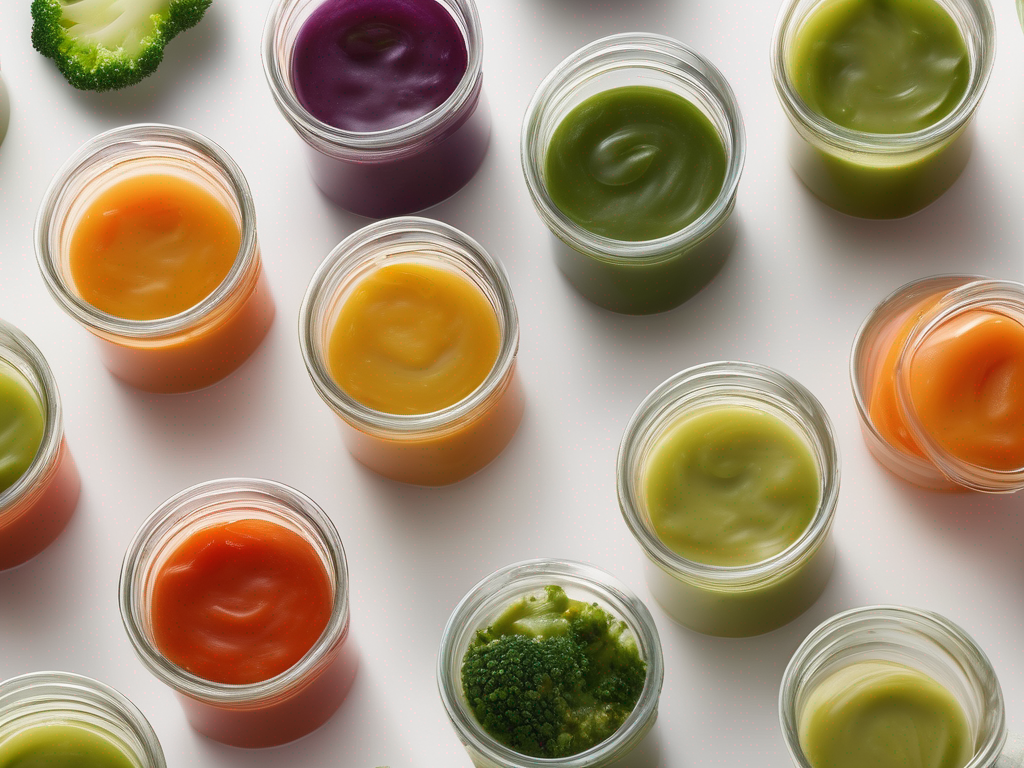
Is Your Mixed Vegetable Baby Food Safe to Eat?
Get Your Free Food Safety Cheat Sheet
30 most common foods with instant answers. Print it and stick it on your fridge—completely free!
Is Your Mixed Vegetable Baby Food Safe to Eat?
As a parent, ensuring the safety of the food you feed your baby is paramount. Mixed vegetable baby food is a popular choice for introducing nutritious flavors and textures to your little one. However, like all food products, mixed vegetable baby food can spoil and pose a risk to your baby's health if consumed after it has gone bad. (Mixed vegetable baby food)
Signs of Spoiled Mixed Vegetable Baby Food
It's essential to be able to identify when mixed vegetable baby food has gone bad. Here are some signs to look out for:
1. Changes in Color and Texture
- Color: If the color of the baby food appears dull, faded, or has dark spots, it may be a sign of spoilage.
- Texture: Spoiled baby food may have a slimy or gritty texture instead of a smooth consistency.
2. Unpleasant Smell
- A foul or rancid smell coming from the baby food indicates that it has spoiled. Trust your sense of smell when determining the freshness of the food.
3. Mold Growth
- Visible mold growth on the surface of the baby food is a clear indication that it is no longer safe to eat. Discard any jars or containers with mold growth immediately.
4. Expiration Date
- Check the expiration date on the packaging of the mixed vegetable baby food. Consuming the product after the expiration date can put your baby at risk of foodborne illness.
5. Packaging Integrity
- Inspect the packaging for any signs of damage, such as bulging lids, dents, or leaks. Damaged packaging can lead to contamination and spoilage of the baby food.
Proper Storage Practices
To prolong the shelf life of mixed vegetable baby food and ensure its safety, it's crucial to follow proper storage practices:
1. Refrigeration
- After opening a jar of mixed vegetable baby food, refrigerate any leftovers promptly. Store the food in an airtight container and use it within the recommended timeframe.
2. Temperature Control
- Keep the refrigerator temperature at 40°F (4°C) or below to prevent bacteria growth in the baby food.
3. Avoid Cross-Contamination
- Use clean utensils and serving spoons when feeding your baby to prevent cross-contamination. Do not allow saliva from your baby's mouth to come into contact with the remaining baby food.
4. Freezing
- If you have prepared homemade mixed vegetable baby food, consider freezing it in small portions for future use. Label the containers with the date of preparation to track freshness.
5. Follow Manufacturer Guidelines
- Always adhere to the storage and usage instructions provided by the manufacturer on the packaging of the baby food.
Conclusion
Ensuring the safety of mixed vegetable baby food is essential for your baby's health and well-being. By being vigilant for signs of spoilage, following proper storage practices, and monitoring expiration dates, you can provide your baby with fresh and nutritious meals. Remember that when in doubt, it's always better to err on the side of caution and discard any baby food that appears suspect. Your baby's health is worth the extra effort in ensuring safe feeding practices. [Mixed vegetable baby food](/food/mixed vegetable baby food) is a great choice for introducing your little one to a variety of healthy flavors, so make sure to store it properly and check for signs of spoilage before serving. (Mixed vegetable baby food)
Authoritative Food Safety References
These agencies and university labs inform every tip and health precaution we publish.
USDA FoodKeeper – Cold Storage Guidelines
Official refrigerator, freezer, and pantry timelines maintained by the U.S. Department of Agriculture.
Visit USDA FoodKeeperFDA Produce Safety Rule & Grower Guidance
Field-to-fridge handling practices that prevent contamination of fruits, vegetables, and leafy greens.
Visit FDA Produce SafetyCDC Foodborne Illness Prevention Hub
Surveillance-backed guidance on pathogens, symptoms, and steps to reduce foodborne illness risk.
Visit CDC Food SafetyUC Davis Postharvest Technology Center
University research detailing optimal storage atmospheres for produce after harvest.
Visit UC Davis PostharvestPenn State Extension – Home Food Preservation & Safety
Peer-reviewed extension bulletins on safe canning, chilling, and reheating practices.
Visit Penn State ExtensionGet Your Free Food Safety Cheat Sheet
30 most common foods with instant answers. Print it and stick it on your fridge—completely free! Want more? Upgrade to the complete guide with 70+ foods.
Scan your food directly and get instant safety info using our AI-powered camera feature.